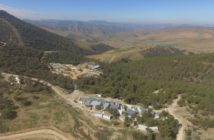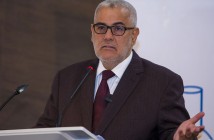 Global Arab Network – In spite of regional unrest and rising commodity prices that have led to an increase in the trade deficit for the year-to-date, the prospects for the Moroccan economy in 2011 are encouraging thanks to a variety of factors, including a strong harvest and broader diversification. Figures for 2010 and the first five months of 2011 also show that inflation remains very low, Global Arab Network reports according to Oxford Business Group.
Global Arab Network – In spite of regional unrest and rising commodity prices that have led to an increase in the trade deficit for the year-to-date, the prospects for the Moroccan economy in 2011 are encouraging thanks to a variety of factors, including a strong harvest and broader diversification. Figures for 2010 and the first five months of 2011 also show that inflation remains very low, Global Arab Network reports according to Oxford Business Group.
The Moroccan High Planning Commission (Haut Commissariat du Plan – HCP) announced in early June that GDP grew by 3.7% in real terms in 2010, marking the 13th consecutive year of growth. The final result was 0.5 percentage points higher than the estimate the HCP had given in March and that the IMF published in its April World Economic Outlook (WEO). While agricultural GDP fell slightly, non-agricultural growth stood at 4.5%, illustrating Morocco’s increasing diversification away from the once-dominant farming sector. A 4.7% increase in the value of exported goods and services also helped underpin the expansion. The result brings mean annual growth for the past five years to 4.9%, compared to 2.9% for the previous five-year period and -0.4% in the half-decade before that, underlining the extent to which the economy has been transformed over the past 15 years.
According to the IMF’s WEO figures released in April, Morocco is set for another year of healthy expansion in 2011, with GDP expected to rise to around 3.9% in 2011. The government is more optimistic still, with the Finance Ministry forecasting 5% growth. An anticipated strong harvest, thanks to good weather early in the year, should support a high rate of growth, given the continued importance of agriculture. The government’s assessment assumed a cereals harvest of 7m tonnes but the central bank, Bank Al Maghrib, forecast in June that it would reach 7.8m tonnes.
The tourism industry also helps underwrite the expansion. Although the number of nights has dropped in most major destinations, and Ramadan has furthered dampened vacancy rates, the sector’s receipts were up 8% year-on-year for the first five months of 2011. Economic recovery in Europe also helped push remittances up by 6.8% in the year to May.
Inflation remains firmly under control, standing at just under 1% in 2010 according to IMF estimates, a figure that was largely unchanged from 2009. The consumption price index in May was unchanged from the same point in the previous year, with a 0.8% fall in the price of food having effectively cancelled out a 0.8% rise in non-food prices. However, the underlying inflation rate – which does not include the prices of goods that are regarded as volatile or those with prices set by the state – stood at 1.4% in May. While the WEO figures forecast inflation to reach 2.9% for 2011 as a whole, in June Bank Al Maghrib lowered its inflation prediction for 2011 from 2.1% to 1.4%, thanks in large part to a drop in food prices. It therefore opted to leave the benchmark interest rate unchanged at 3.25%.
According to the HCP, the official unemployment rate fell in the first quarter of 2011 to 9.1%, down from 10% in the same quarter of 2010 and 9.2% in the fourth quarter of 2010. Urban unemployment was down 0.4 percentage points from its level in the final quarter of 2010 to 13.3%, while the rural joblessness rate rose by 0.1 percentage points, to 4.3%.
Similarly, official figures for urban unemployment for people between the ages of 15 and 24 was down 2.3 percentage points on the previous quarter, an encouraging trend given that urban youth joblessness has been one of the most stubborn categories of unemployment. While the unemployment rate has fluctuated slightly in recent years, with unofficial estimates often suggesting higher levels of unemployment, over the longer term increased growth has successfully helped to bring joblessness down from 14-15% in the late 1990s.
While performance across a range of indicators remains strong, the economy nevertheless faces some challenges in 2011. High oil and wheat prices helped push the trade deficit for the year to May up 25% on the same period in 2010, to Dh76.6bn (€6.65bn). While a 50% increase in the value of phosphate and phosphate product sales abroad helped drive a 22% increase in exports on the first five months of 2010, to Dh69.9bn (€6.07bn), they were outpaced by a 23.7% rise in the value of imports.
Imports of oil by volume fell by just under 5% on the first five months in 2010 but nevertheless increased the import bill, due to a 31% rise in the average price of oil during the period. Wheat imports rose in volume – by 43% year-on-year – and in cost, with international prices having increased by 66%.
Despite some of its economic gains being eroded by expanding costs of imports, rising GDP and falling unemployment should see the growth trajectory continue its upward swing.
Global Arab Network
This article is published in partnership with Oxford Business Group
http://www.english.globalarabnetwork.com/2011082311304/Economics/in-spite-of-regional-unrest-morocco-making-progress.html






